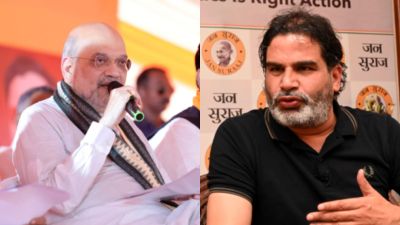In Kerala schools, weather stations to make geography lessons fun
For a little over a year, children in Kerala's schools have been making a mark every day, rain or shine. They are the local meteorologists, recording 24-hour rain data, humidity and wind speed and direction, and using that to understand micro-weather patterns and climate
 The school in Tirur is among 258 schools in the state where weather stations have been installed by the Samagra Shiksha Kerala (SSK) of the General Education Department. (Express Photo)
The school in Tirur is among 258 schools in the state where weather stations have been installed by the Samagra Shiksha Kerala (SSK) of the General Education Department. (Express Photo) It’s 11.30 am, break time at the Government Boys’ Higher Secondary School in Tirur, a coastal town in Kerala’s Malappuram district. Jalwa Jesi C P, Hanoona and Abhiram A, humanities students of Class 12, step out of their classroom with their pens and writing pads and get down to work under an overcast sky. Their task today: to record weather data of the last 24 hours at the school weather station (SWS).
For a little over a year, children in Kerala’s schools have been making a mark every day, rain or shine. They are the local meteorologists, recording 24-hour rain data, humidity and wind speed and direction, and using that to understand micro-weather patterns and climate.
 A wind vane and a cup anemometer, instruments to gauge wind direction and speed respectively, have been installed on the terrace of the school. (Express Photo)
A wind vane and a cup anemometer, instruments to gauge wind direction and speed respectively, have been installed on the terrace of the school. (Express Photo)
The school in Tirur is among 258 schools in the state where weather stations have been installed by the Samagra Shiksha Kerala (SSK) of the General Education Department. Of the 258 stations, 246 have become operational since June 1 this year. Under the project, fully funded by SSK, each school is allotted Rs 78,000, with all the instruments for the weather station designed as per standards fixed by the India Meteorological Department (IMD).
With the aim of imparting practical lessons to school students, SWS is a first-of-its-kind educational project in the country as part of which social science students, who have geography as an optional subject in classes 11 and 12, collect daily weather data.
 Among the instruments at the school weather station is a non-recording type rain gauge, which displays total rainfall over a specific time period. (Express Photo)
Among the instruments at the school weather station is a non-recording type rain gauge, which displays total rainfall over a specific time period. (Express Photo)
At the Tirur school, where the data is being collected since April this year, students do so under the supervision of their geography teacher. They first walk up to the fenced area in the school premises where the SWS is installed. The enclosure houses a non-recording type rain gauge (which displays total rainfall over a specific time period), a Six’s maximum-minimum thermometer (that can record maximum and minimum temperatures reached over a period of time) and a wet & dry bulb thermometer mounted inside the Stevenson’s Screen (to check temperature sensors from being influenced by direct or reflected sunlight and other external sources). Besides, on the terrace of the school are the wind vane and a cup anemometer, instruments to gauge wind direction and speed.
 The weather station at the Tirur school. The instruments are installed in an enclosure on the premises. (Express Photo)
The weather station at the Tirur school. The instruments are installed in an enclosure on the premises. (Express Photo)
As the children go about their work with practised ease and record the data in their notebooks, their geography teacher Suresh Kumar S says, “This is the best way to teach climate and weather to children. This project has helped create climate literacy and enthusiasm for geography among the students. We have been recording the data since April 1 and our students have turned up every day, even during the summer break, to measure weather data. They are even trained to look at the data of, say, June, and talk about how erratic the rainfall has been in Tirur over the last one month.’’
His students then enter the day’s weather data in an observation chart in the school office room, before moving to the corridor and jotting down the data on a white board. The findings for the day: maximum temperature 30 degree Celsius; minimum 27°C; relative humidity 67 per cent; rainfall 0; wind speed 2 km per hour; direction of wind: north-west.
 The wet & dry bulb thermometer to measure humidity is mounted inside the Stevenson’s Screen. (Express Photo)
The wet & dry bulb thermometer to measure humidity is mounted inside the Stevenson’s Screen. (Express Photo)
SSK state project director A R Supriya said the school weather stations have generated much curiosity not only among students, but the local population as well. “We have several local-self-government bodies getting in touch with schools and seeking daily weather reports so that they can be alert to weather patterns in their region. We are planning an online platform to share the data and its analysis with the public. Before that, we have to ensure that the data is authentic and that all stations function in a standardised manner. We will soon come up with a system to pool the data from all these weather stations so that we have an insight into rainfall and other weather patterns in different parts of the state,’’ she said.
Ali Rassal, a Class 12 student at the Tirur school, said the weather station has helped him understand and appreciate weather conditions and patterns better. “People who know about the weather station in our school ask us about the day’s weather,’’ he said.
His classmate Ruhaima T said, “Now we are constantly looking up weather reports and climate news. We also research on related topics, say, when we hear about a cyclone in Gujarat. It has widened our scope of learning.’’
SSK officials said the idea of the weather stations came up during a debate on how to get students interested in social science. The National Achievement Survey of 2021 had found that Kerala’s performance in Social Science “needed improvement”. A state-level brainstorming session with teachers had revealed that social science students usually saw geography as a tough subject. What followed was a decision to set up laboratories, with dioramas on the solar system, at a few schools in the state on a pilot basis.
Recalls SSK project consultant and former state programme officer Suresh Kumar A K, “Later, we decided to take these labs to a higher level, which led to the idea of weather stations. The floods of 2018 and 2019 in Kerala had also brought more focus on monitoring weather at the micro level and that’s how we decided to launch weather stations in 258 higher secondary schools where geography is being taught.’’
In 2022, SSK formed a 10-member core team of geography teachers in higher secondary schools, who consulted the IMD and the Centre for Water Resources Development and Management-Kozhikode on setting up school weather stations. In October last year, 44 geography teachers were trained by the Advanced Centre for Atmospheric Radar Research (ACARR) at the Cochin University of Science and Technology (CUSAT) on installation, maintenance, data collection and analysis of the data at the proposed weather stations.
Dr S Abhilash, director at ACARR, said the data from 250-odd stations has “huge potential, more so because we have been getting localised rain spells in recent years. It would help having a better, micro-level understanding of rain patterns. All schools should ensure that the data is authentic and it is being recorded every day. Although the system cannot be compared with the IMD mechanism, the school stations will serve the purpose of an informal weather observatory at the ground level. Besides creating larger awareness about climate among students and local communities, it can supplement the data gap in weather monitoring’’.







